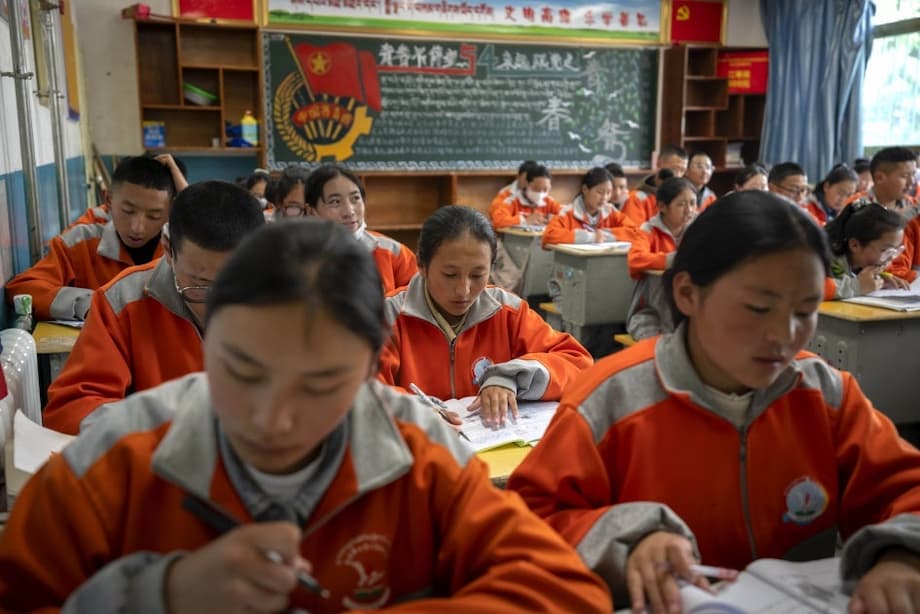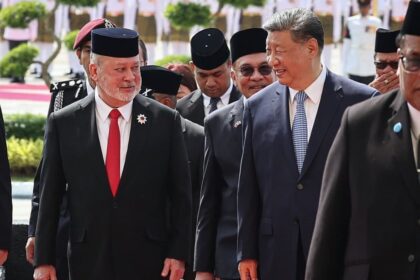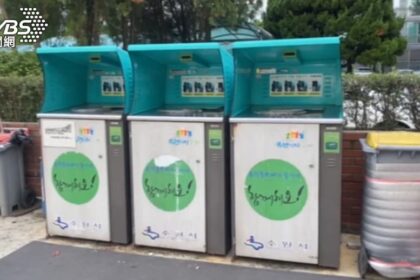A sweeping new law to engineer unity
China has unveiled a draft Law on Promoting Ethnic Unity and Progress that would harden ideological controls across society, rewrite language policy for minority communities, and extend legal pressure far beyond the country’s borders. Submitted to the National People’s Congress on September 8, 2025, the 62 article draft would codify General Secretary Xi Jinping’s approach to ethnic affairs, which centers on cultivating a single Chinese national identity under party leadership. The proposal outlines a dense system of directives that reach into classrooms, temples, factory floors, local planning offices, and online spaces.
- A sweeping new law to engineer unity
- What the draft law says and how it would work
- A shift from autonomy toward assimilation
- What this means on the ground in Tibet, Xinjiang, and Inner Mongolia
- Targets abroad, pressure at home
- Digital rules and surveillance will reinforce the law
- How a bill becomes law in China
- International responses and possible options
- At a Glance
Supporters inside the system frame the initiative as a way to promote social cohesion and equal development for all citizens. The text also repeats long standing government narratives about preventing separatism and extremism. Rights advocates warn that the practical effect would be the opposite for many communities. The draft erases earlier guarantees for the use and development of minority languages, elevates Mandarin Chinese as the dominant medium from preschool onward, and labels a wide array of activism as harmful to ethnic unity, which has been used in the past to criminalize peaceful speech and cultural advocacy. The proposal goes further by asserting influence over people and institutions outside China, creating new risks for diaspora critics and foreign organizations.
What the draft law says and how it would work
The draft law prescribes a unified national framework in which the party’s vision of a multi ethnic China is embedded in education, religion, history, culture, tourism, media, and the internet. It directs authorities at every level to highlight Chinese cultural symbols in public spaces and to weave this ideology into urban planning, housing and economic policies, and even areas like food and border security. The goal is to organize education and governance so that all groups adopt what the text calls correct views of the state, history, nation, culture, and religion.
Education and language policy
The proposal would push Mandarin Chinese to the center of school life nationwide. It requires preschool children to learn Mandarin and says students should master the language by the end of compulsory education. Earlier laws, including the 1984 Law on Regional National Autonomy, had formally protected the right of minority communities to use and develop their own languages. In practice, those rights have been shrinking for years. Classrooms in Tibet, Xinjiang, and Inner Mongolia have already seen a sharp reduction in mother tongue instruction, despite public opposition and protests. The draft law would lock that shift into place through national legislation.
Education is not the only venue targeted. The draft seeks an official reinterpretation of history and culture through curriculum, museums, and heritage sites. That approach pairs language standardization with a cultural narrative that stresses a single Chinese nation. In this vision, local identities are welcome only if they serve the shared national story built around state unity and party leadership.
Obligations for families, workplaces, and religious groups
The draft would enlist parents, companies, public institutions, and religious organizations into the work of promoting party ideology. Parents and guardians are told to guide minors to love the Chinese Communist Party and to reject ideas deemed harmful to ethnic unity. Enterprises and industry associations would be expected to carry the same message into workplaces. Religious bodies would face added pressure to align teaching and practice with the official political line.
Public space is treated as an ideological tool. The draft directs authorities to establish and showcase Chinese cultural symbols in public facilities, architecture, and tourist sites, including rules for naming places. It also calls for integrating ideological goals into urban and rural planning and into programs that shape where people live and work. That creates a complete loop from slogans in schools and offices to the physical design of neighborhoods.
Extraterritorial reach and accountability
The draft does not stop at China’s borders. It promotes outreach to overseas Chinese communities and says organizations and individuals abroad who undermine national unity or incite ethnic division should be held legally accountable. It also seeks to influence international scholarship and civic exchanges. These measures mirror a wider pattern of transnational pressure, including official campaigns to standardize foreign usage of Chinese place names, such as encouraging institutions overseas to use Xizang for Tibet.
Legal language that appears to reach abroad raises practical concerns. While China cannot directly enforce domestic statutes in other jurisdictions without cooperation, the state can use a broad toolkit that includes denial of visas, exit bans, pressure on families inside China, and criminal charges for citizens who return. The draft’s language signals an intent to systematize that playbook under the banner of ethnic unity.
A shift from autonomy toward assimilation
For decades, China presented a model of regional ethnic autonomy in which minority communities were recognized in law and granted some limited cultural and linguistic space. Over the past ten years, that framework has given way to a strategy that places unity and integration above autonomy. The shift is anchored in a party slogan that calls for forging a strong sense of community of the Chinese nation. The new draft law would turn that political line into binding rules across sectors.
Recent top level meetings signaled that change. At an August 29 Politburo session, leaders discussed plans to advance ethnic unity and improve mechanisms to build national identity. They emphasized ideological work, adaptation to changing social groups, and stronger party leadership over ethnic affairs. These discussions set the stage for the draft law’s submission in early September.
Language policy is central
Language sits at the heart of the new approach. Alongside the ethnic unity draft, lawmakers have also reviewed revisions to the Law on the Standard Spoken and Written Chinese Language. The revision aims to standardize Mandarin use across public service, education, international events, and the digital sphere. Advocates say a common language supports social mobility and access to national opportunity. Minority communities counter that forced uniformity erodes heritage languages and narrows the space for cultural expression. In Inner Mongolia and Tibet, mothers and fathers who organized mother tongue classes have faced bans and closure orders. The draft unity law, combined with language legislation, would make Mandarin instruction the default in more settings and leave only limited room for minority languages in formal education.
Government messaging has also evolved. State media and official statements increasingly present Tibet as Xizang and frame tighter integration as a path to prosperity and national strength. That branding is matched by administrative changes on the ground, including the consolidation of school systems and standardized curricula written in Mandarin.
What this means on the ground in Tibet, Xinjiang, and Inner Mongolia
The draft law matches policy trends already visible in minority regions. In Tibet, authorities have restructured schooling toward Mandarin as the medium of instruction, increased controls on religious practice, and pressed rural communities to relocate into new settlements. These measures are described as poverty reduction and modernization. Tibetans who question mass relocations or advocate for language rights can face detention for harming ethnic unity under existing legal tools. The new law would add a formal basis to the same outcomes.
During a visit to Lhasa ahead of the region’s anniversary celebrations, President Xi Jinping presented a vision for the area’s future. According to the official account, he described the goal in terms that emphasize unity and development.
Xi said he wanted to build a modern socialist new Xizang that is united, prosperous, civilized, harmonious, and beautiful.
In Xinjiang, authorities have pursued an intensive security campaign since 2017. Peaceful expressions of faith, such as Quran study without state oversight, have been treated as ideological challenges. Rights researchers have concluded that crimes against humanity have been committed against Uyghurs and other Turkic Muslims through mass detention, forced labor, and cultural persecution. Legal language about damaging unity and spreading extremism has been used to justify punishment for everyday conduct. The draft law would tighten the ideological justification for these measures and help align provincial regulations with a single national template.
Case study, language and schooling
Inner Mongolia saw large protests in 2020 after education authorities replaced Mongolian language textbooks and increased the use of Mandarin for core subjects. Since then, parents who try to organize private tutoring in Mongolian have faced pressure and closures. In Tibetan areas, local governments have shut down community funded schools that taught in Tibetan even when those classes followed the official curriculum. The unity draft would consolidate a system in which mother tongue learning is permitted mainly as a minor subject, while the central content of education is delivered in Mandarin. That model steers future generations toward linguistic assimilation and reshapes identity around a single national narrative.
Religious life is also affected. The law’s call for correct views of religion adds weight to existing programs that align Tibetan Buddhism and Islam with state priorities. Clergy and laypeople alike can be sanctioned for what authorities regard as improper teaching or unauthorized gatherings. Under such a framework, cultural preservation and faith practice are tolerated only within narrow parameters defined by the state.
Targets abroad, pressure at home
The draft’s international dimension would formalize pressure that rights groups and diaspora communities have documented for years. The proposal promotes a worldview in which overseas Chinese, and even foreign academics and organizations, are drawn into the state’s effort to foster national identity and suppress what it deems division. While extraterritorial enforcement faces obvious legal limits, the state can still rely on soft power, visa policies, information operations, and the threat of domestic reprisals against relatives.
Recent cases illustrate potential pathways. Zhang Yadi, a student advocate for Tibetan rights who studied in France, was detained after returning to China and now faces charges tied to undermining national unity. Her work included editing a Chinese language platform that encouraged dialogue across ethnic lines. Prosecutors have used Criminal Law provisions that penalize speech about independence and unity. The draft law would not replace those offenses, but it would add a sweeping policy framework that points local officials toward stricter policing of identity and speech across borders.
Maya Wang, associate Asia director at Human Rights Watch, has warned that the proposal is designed for an environment where boundaries between citizen, state, and party ideology are blurred.
Wang said the draft on ethnic unity is a blatant effort by the government to control people’s thoughts and expression about China, both inside the country and abroad.
Pressure on language and identity has also moved into the information space outside China. Authorities have urged foreign institutions and companies to use official Chinese terminology for sensitive regions. Conferences and joint programs are increasingly evaluated by how closely they align with the state’s set phrases and framing.
Digital rules and surveillance will reinforce the law
Parallel legal moves in cyberspace point to a tighter enforcement environment if the unity law passes. Amendments under review for the 2017 Cybersecurity Law would reinforce control over data flows, platform operations, and online speech. Combined with existing regulations on algorithms and content moderation, these rules give authorities latitude to track, label, and punish behavior presented as damaging to unity. Citizens in minority regions already live under dense surveillance systems that rely on checkpoints, facial recognition, phone inspections, and extensive data collection. The draft law’s ideological language could trigger new monitoring tasks for local officials and tech companies.
Technology supply chains add another layer. Lawmakers in Washington have pressed firms to tighten controls after reports that components and software from the United States helped power elements of China’s surveillance networks. If countries adopt stronger export screening for dual use technologies, Chinese public security agencies may need to find substitutes or adjust procurement. For people in Tibet and Xinjiang, the more immediate concern is how fast new rules can be combined with existing tools to scrutinize everyday life, from school attendance to prayer to online chat groups.
In the digital classroom, language standardization can be enforced through software. Teachers can be required to use Mandarin voice recognition and learning apps. Parents can be prompted to demonstrate household compliance through school platforms. The unity law would signal to local administrators that metrics tied to language use, patriotic education, and ideological conformity should be tracked and rewarded.
How a bill becomes law in China
China’s legislature enacts laws through a process that often moves quickly once top leaders have set direction. Drafts are reviewed by the Standing Committee of the National People’s Congress in multiple readings. Public comment is sometimes invited online, but amendments typically reflect internal consultations rather than open debate. Once adopted, ministries and provincial governments issue detailed regulations and work plans. Courts and prosecutors receive training to apply the new rules in line with party guidance. Given the breadth of the ethnic unity draft and the political priority attached to national identity, the odds of passage are high.
Timing is harder to predict. Some major laws have moved from draft to adoption within a few months, while others have taken longer as agencies negotiate implementation details. Local officials will likely wait for guidance on how to measure compliance. That usually means quotas, campaigns, and inspection tours that translate national slogans into checklists for schools, temples, companies, and neighborhood committees.
International responses and possible options
Governments, universities, and civil society groups outside China face a choice about how to respond if the law passes in its current form. Rights organizations have urged states to press Beijing to withdraw or amend the proposal and to stop persecuting ethnic minority communities and their supporters. There are tangible measures that can be taken without cutting all ties. Export controls can be strengthened to keep surveillance parts and software out of agencies that abuse rights. Academic exchanges can include safeguards that protect scholars, students, and translators from retaliation for research on sensitive topics. Cultural programs can invest in Tibetan, Uyghur, and Mongolian language literature and teaching materials for diaspora communities.
Support for people at risk matters. Tibetan and Uyghur groups in exile report heavy pressure on families back home, making even phone calls dangerous. Host governments can provide secure pathways for study and work, ease restrictions on civil society funding, and offer technical support for documentation of abuses. Diplomatic visits to Tibet and Xinjiang should insist on unfettered access. Sanctions against officials and entities responsible for severe violations can raise costs, especially when coordinated across allied countries. At the same time, channels for health, disaster response, and climate cooperation can continue, since access to people in remote regions often depends on working contacts with local authorities.
Businesses that operate in or with China will have to navigate new risks. Compliance programs will need to examine whether staff training, school partnerships, or sponsorships are being used to propagate ideology in ways that violate company standards. Firms should review their human rights due diligence for supply chains that run through Xinjiang or Tibetan areas, including recruitment practices and language rules at factories. Investors will ask whether reputation and legal risks are priced into operations in sectors linked to surveillance, data, or education.
At a Glance
- China’s draft Law on Promoting Ethnic Unity and Progress was submitted on September 8, 2025, with 62 articles that embed party ideology across society.
- The proposal elevates Mandarin from preschool onward and narrows earlier protections for minority language education.
- Parents, companies, and religious groups would be required to promote party approved views of history, culture, and religion.
- Authorities are directed to display Chinese cultural symbols in public spaces and integrate ideology into planning, housing, economic policy, and security.
- The draft prohibits acts that damage ethnic unity, a label previously used to criminalize peaceful advocacy in places like Tibet and Xinjiang.
- It seeks extraterritorial impact by promoting outreach to overseas Chinese and warning that people abroad who undermine unity may face legal consequences.
- Revisions to national language law and cybersecurity rules would reinforce the unity draft through school curricula and digital controls.
- Rights groups warn the law would accelerate forced assimilation of Tibetans, Uyghurs, and other minorities and deepen repression.
- Recent cases, including the detention of student advocate Zhang Yadi, show how unity related charges are used against speech and activism.
- International options include tighter export controls on surveillance tech, protection for scholars and students, targeted sanctions on abusive officials, and support for diaspora language and culture programs.












